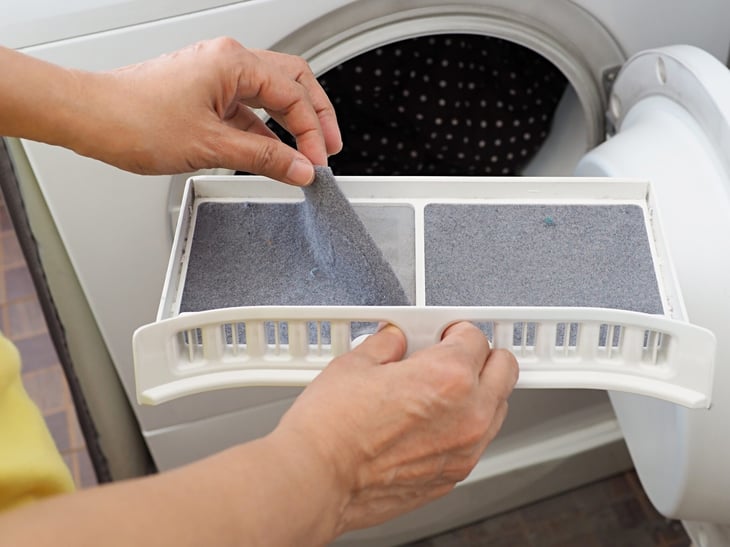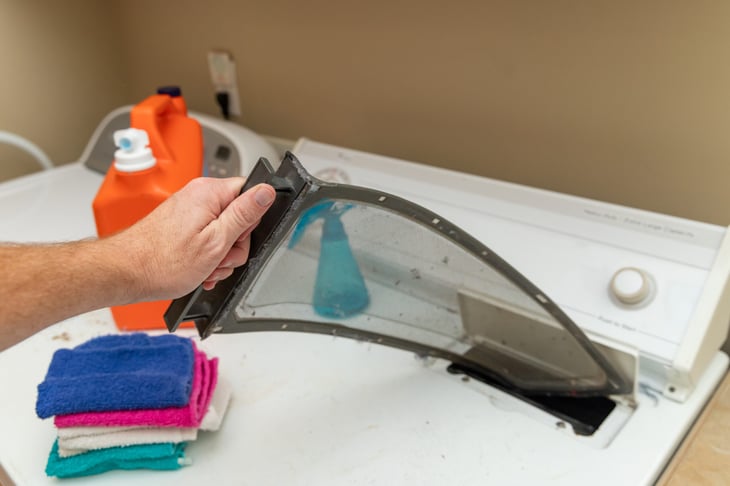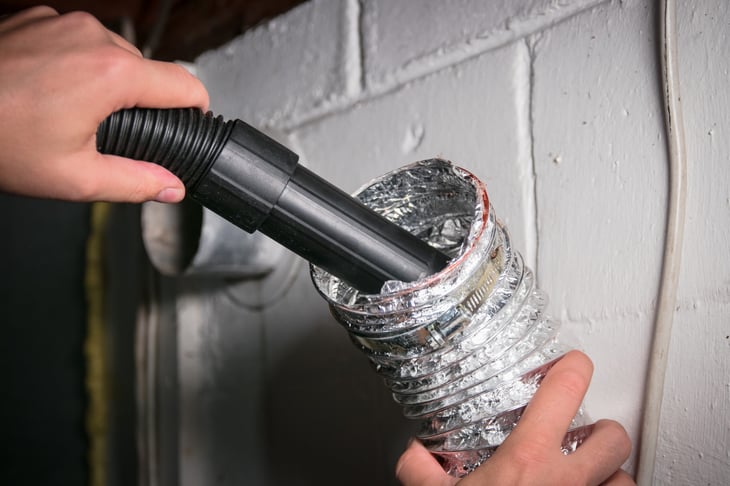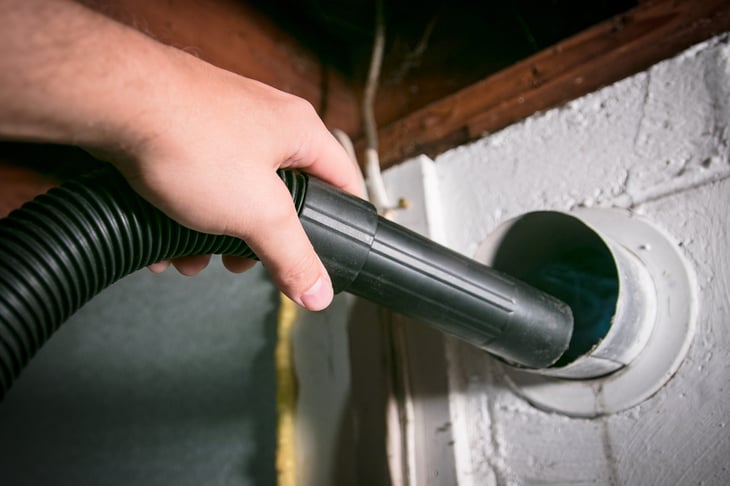
A clogged dryer vent is a problem you shouldn’t ignore. Failing to clean the lint out of the vent can mean it takes longer to dry your clothes, raising your energy costs.
And in a worst-case scenario, it can lead to a devastating blaze. In fact, failure to properly clean a dryer vent is the leading cause of dryer fires, according to the National Fire Protection Association.
While some people hire a professional to clean their dryer vent, it is often a job you can do on your own. Here’s how to do it.
1. Remove lint after every use

Keeping your dryer vent clean starts with removing lint from the filter after every use.
You won’t get all the lint out of the vent, but it will help prevent excessive buildup of lint on the screen and into the vent. It is fine to do this by hand.
2. Clean the screen with a brush

At least every six months, clean the lint filter with a dryer lint screen brush.
Then, wash the screen with some laundry detergent and rinse. Or, if you prefer, put the lint screen in the dishwasher.
3. Clean the vent hose

To clean the vent hose, unplug the dryer and pull it out far enough so you can get access to the hose, which is generally attached to the back of a machine. Use a screwdriver to detach the hose.
To properly clean the hose, many people use a vacuum cleaner with an attachment.
You can also purchase a dryer vent cleaning brush to clean the hose.
4. Clean the vent

Experts agree that this is one of the areas that makes you most vulnerable to a fire, especially if lint and other debris builds up. So make sure you keep the vent clean.
A vacuum cleaner or even a leaf blower can work here. If the vent is clogged, you might need to use an auger snake to break things up.
The U.S. Fire Administration says you should clean the vent as often as every three months. The National Fire Protection Agency recommends cleaning the lint out of your dryer’s vent pipe at least annually.
5. Regularly inspect and clean the area around the vent cap

Go outside your house and inspect the vent cap. Make sure it is clear of any plants or vegetation, dirt or snow. Also, make sure no lint or other debris is blocking the flaps.
Installing a cover over the flap can help keep debris out.





Add a Comment
Our Policy: We welcome relevant and respectful comments in order to foster healthy and informative discussions. All other comments may be removed. Comments with links are automatically held for moderation.